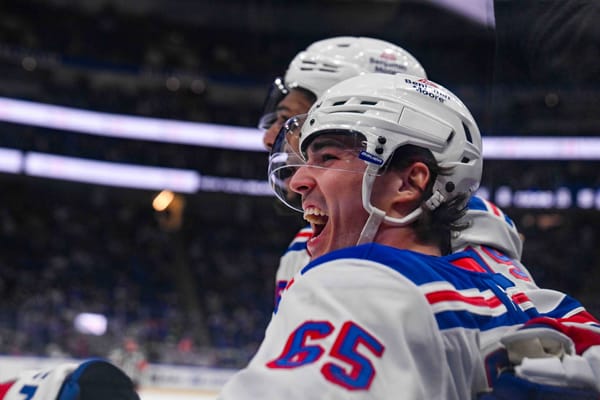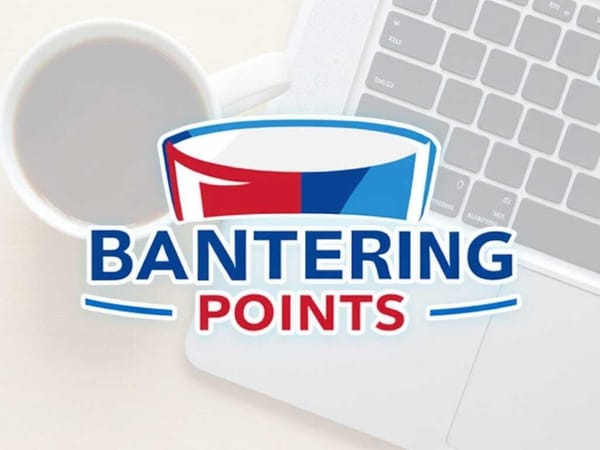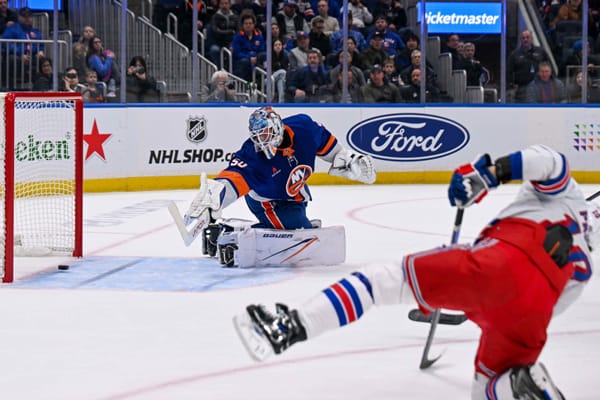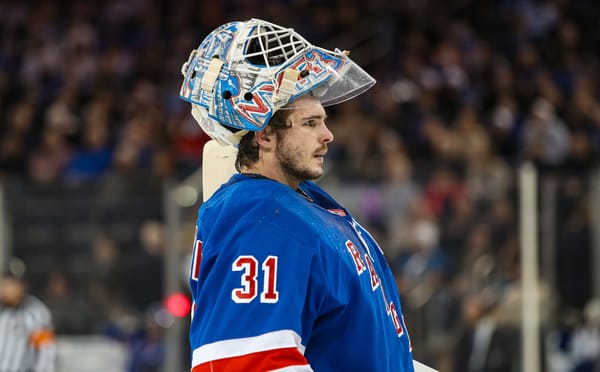Blueshirt Banter 2019 New York Rangers Prospect Rankings: 35-31
Before we get into this, let’s first list the prospects in the organization who did not make the cut for our Top-35, sorted alphabetically.
35. Hunter Skinner, Right Defense
2018 Ranking: N/A
Age: 18
Acquired Via: 2019 Draft (Fourth Round)
In a Rangers draft that otherwise stayed within consensus range, Hunter Skinner was their one off-the-board selection. Seemingly nobody had him on their boards at all, let alone as a potential fourth-round selection.
Skinner is a big, 6’3 right-handed defenseman who played in the USHL last season. Relative to his size, his skating is actually okay. By no means is he a burner, and his lateral movement needs work, but his straight-line movement is good enough to keep up with the play and make him a decent option to get involved on transition rushes.
Defensively, he uses his size to ride off puck carriers and long range to get his stick on pucks.
His offensive impact is concerning. He does possess a big shot, and he was a trigger man on Muskegon’s second PP unit last season.
However, he does not do much in possession of the puck. Five goals and 19 assists in 52 USHL games is mediocre production at best. What’s more, he tends to handle the puck like a grenade. A lot of defensive zone turnovers. Numerous missed stick blades on attempted passes from the defensive zone and through the neutral zone. Not every defenseman has to be a big point producer, but his struggles to play a role in pushing play forward can kill shifts.
I can understand why the Rangers might have been drawn to Skinner. He’s 6’3, a decent skater, and has a big shot. In isolation, these traits are appealing. It’s not difficult to see a scout convincing himself that Skinner is “projectable.” However, the Rangers have gone down this road again, and again, and again. Over the last decade the Rangers have constantly taken chances on big defensemen who don’t put up points, and not once has it paid off. Dylan McIlrath. Samuel Noreau. Sergey Zborovskiy. Simon Kjellberg. The list goes on. Will Skinner be the exception? Maybe. He has an outside chance as a 3rd-pair, penalty-killing defenseman. But this sure feels history repeating itself.
Skinner was originally slated to attend Western Michigan University for the 2020-2021 season, but he has instead decided to sign with the London Knights of the OHL, where he will play next season.
34. Darren Raddysh, Right Defense
2018 Ranking: N/A
Age: 23
Acquired Via: Trade (2019)
Acquired from the Chicago Blackhawks in February in return for AHLer Peter Holland, Raddysh is a late bloomer who went undrafted and didn’t really make himself a legitimate NHL prospect until his overage season in the OHL, when he posted 81 points in 62 games. After joining Chicago, he produced a respectable 48 points in 120 games for their AHL affiliate. Raddysh’s production took a steep drop since joining Hartford, registering just four points in 22 games, but it’s hard to draw much meaning from that given that Hartford was barely a functioning hockey team towards the end of last season.
Raddysh has good vision from the back-end but I’m not sure he’s fast or strong enough to establish himself as an NHLer. Nonetheless, he actually serves quite an important role in the Rangers’ system. Of the many nightmare situations in Hartford last season, the most glaring and inexcusable was that Hartford was quite often dressing five, or even six, left-handed defensemen. There are still some questions about how the Rangers’ defense will shake out at the NHL level, and how that will then affect Hartford’s roster, but Raddysh will be an important pseudo-veteran who provides a stable presence as a top-four defenseman.
33. Nico Gross, Left Defense
2018 Ranking: 38
Age: 19
Acquired Via: 2018 Draft (Fourth Round)
Gross followed up an underwhelming draft season in the OHL with just about more of the same. He produced three goals and 17 assists in 56 games for the Oshawa Generals, plus just two points in 15 playoff games.
Frankly speaking, I wasn’t enamored with this selection when the Rangers made it back in 2018 and it’s just as questionable now. His offensive numbers are putrid, and the underlying measures are equally mediocre. He’s an okay passer of the puck, but nothing special. He struggles mightily with defending rushes. His gap control needs a lot of work, as does his lateral movement. He was badly exposed at the Traverse City Tournament it continued to be an issue in Oshawa.
I don’t really know where to look to find Gross’ strengths. There’s no particular area of the game in which he stands out. I think he has a chance to be a decent minor leaguer, but that’s about it.
32. Patrick Newell, Right Wing
2018 Ranking: N/A
Age: 23
Acquired Via: Free Agency (2019)
Newell was a relatively nondescript college hockey player who burst onto the scene during his senior season at St. Cloud State, scoring 21 goals in 39 games for the Huskies (he previously had scored no more than 7 in an NCAA season.) His breakout season and NCAA Tournament appearance were enough to earn a contract with the Rangers.
There are some things to like about Newell’s game and story. He is a relatively fast skater who battles and possesses offensive sense. At 5’10 and 170 pounds, he is undersized and could theoretically fit the mold of a classic late-bloomer.
However, I am skeptical that his senior season was anything more than lightning in a bottle. The numbers in his first few seasons were underwhelming, and last season he benefitted from a couple of quality forwards in Ryan Poehling and Blake Lizotte. During his six games with the Hartford Wolf Pack, he was pedestrian.
Each team can have 50 players under contract during the season. Taking a flyer on a small forward with offense on his resume is hardly the worst use of one of those 50 spots. Still, Newell is going to have to really step up in order to earn a notable role with the Wolf Pack, let alone an eventual chance with the Rangers.
31. Gabriel Fontaine, Center
2018 Ranking: 32
Age: 22
Acquired Via: 2016 Draft (Sixth Round)
With Fontaine, what you see is what you get. He’s a responsible defensive center with good strength for his size, and every once in a while he can make some impressive offensive plays.
He was a dependable player in Hartford last season, but 26 points in 72 games do not inspire.
When the Rangers drafted Fontaine as an overager in 2016, there was little doubt that he would be a legitimate professional hockey player in North America. That kind of assurance is not common at that stage of the draft. However, Fontaine’s upside was also limited, and the Rangers have not helped his cause. Not that there were ever any guarantees that Fontaine would make the NHL, but his development has completely plateaued in Hartford the last two seasons. One can’t help but wonder if he’s pushing for an NHL job right now had the Rangers put together a competent developmental structure. Maybe Fontaine can reach a new gear and put himself back on the map as a potential bottom-six NHL center, but it may also be too little too late.




